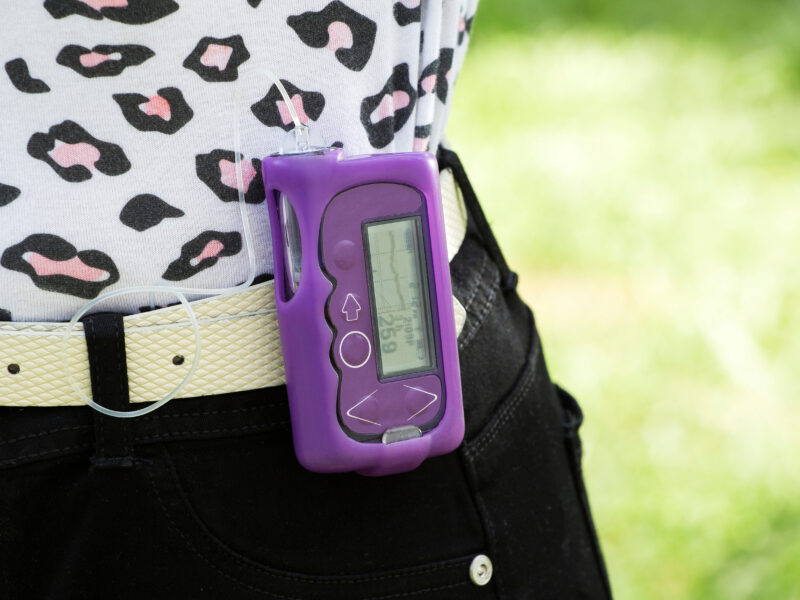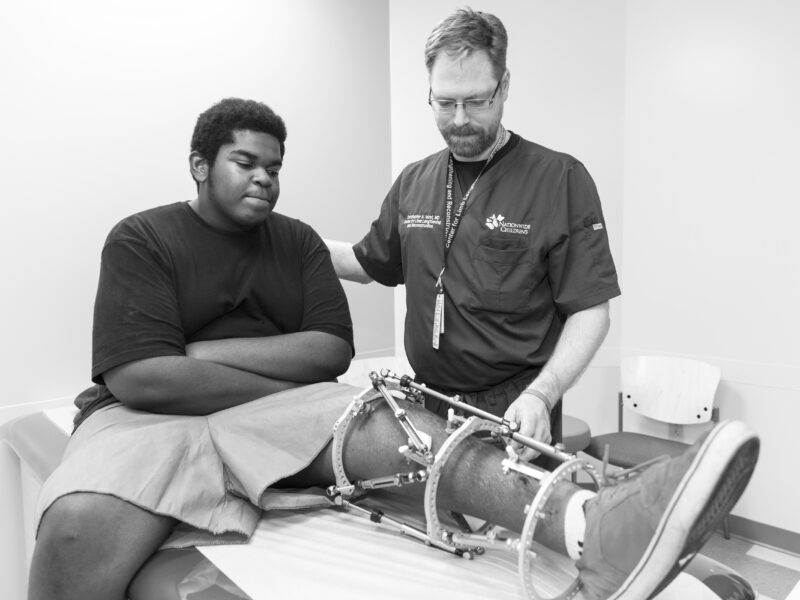Pediatric Bone Density Measures Require Adjusted Scoring for Accurate Interpretation
Pediatric Bone Density Measures Require Adjusted Scoring for Accurate Interpretation https://pediatricsnationwide.org/wp-content/uploads/2019/09/102215ds0097_Bowden_header-1024x575.jpg 1024 575 Katie Brind'Amour, PhD, MS, CHES Katie Brind'Amour, PhD, MS, CHES https://pediatricsnationwide.org/wp-content/uploads/2021/03/Katie-B-portrait.gif- February 15, 2022
- Katie Brind'Amour, PhD, MS, CHES

Understanding the limits of pediatric bone densitometry reports can make results more useful for clinical decision making.
Dual-energy X-ray absorptiometry, or DXA, is the standard scan used to assess bone mineral density (BMD) in children. It uses very little radiation and has extensive normative data from pediatric populations, to which a child’s results can be compared. However, scans at uncommon skeletal sites, inappropriate reference population software and confusion over interpretation of scores in the absence of fracture history can result in misuse of DXA results in the clinic. Now, a chapter published in Endocrine Conditions in Pediatrics offers clinicians a guide to when BMD scans are appropriate to obtain, tips for ensuring valid results and standards for proper score interpretation.
“Because the bone density Z-score in children can be falsely low or high, a diagnosis of osteoporosis in childhood isn’t bone density-centric like it is in adults,” says Sasigarn Bowden, MD, a pediatric endocrinologist at Nationwide Children’s Hospital and professor of clinical pediatrics at The Ohio State University College of Medicine. She authored the bone density chapter in the recent textbook as well as a chapter on multiple fracture assessment. “We have to use a height-adjusted bone density Z-score for appropriate interpretation to correct for the tendency for smaller children to have lower bone density than taller children of the same age. We also have to look at the whole picture; we never diagnose a child with osteoporosis based on bone density Z-score alone. Without clinical fracture history, a low Z-score should be reported only as low bone density for age.”
The recommendations for when to obtain a DXA scan focus on children at risk for poor bone health, often due to underlying primary bone disease, chronic disease, or a history of multiple fractures, pathologic fractures or vertebral compression fractures. Children on chronic glucocorticoids or bone-strengthening therapies, such as bisphosphonates, also require DXA scans to monitor bone density over time and to help direct treatment decisions.
“There are very specific guidelines for when and how often to obtain DXA scans in children with chronic diseases such as Duchenne muscular dystrophy, cystic fibrosis, or inflammatory bowel disease,” says Dr. Bowden, who compiled a robust list of DXA testing indications for the chapter. She also studies bone metabolism in chronic diseases and serves as staff endocrinologist for Nationwide Children’s high-volume Metabolic Bone Clinic.
“DXA scans provide information that helps identify underlying bone fragility in children who may benefit from interventions to improve bone health,” she says. “The results must be interpreted carefully, taking into account the patient’s fracture history, the entire clinical picture and the trajectory of their bone density or illness, to guide clinical decision-making.”
Interpretation of pediatric DXA scans is often best done by a pediatric bone specialist, as they are less straightforward than scans in adults. For example, scans of the hip region can be unreliable in young children. And while the lumbar spine and the whole body scan, not including the head, are the preferred sites used for bone density in children, interference from pins, plates or other problems can force the use of alternate skeletal sites, some of which require specialty software for proper reference population data.
Even with the preferred scanning sites, scores can be subject to misinterpretation unless they are done with respect to age, sex, race and height. This means software must provide pediatric Z-scores rather than just T-scores, which use healthy adults as the reference population. For patients who have pathologic fractures, vertebral compression fractures, a clinically significant fracture history, or who have undergone DXA with a Z-score <-2, a referral to a pediatric metabolic bone specialist is appropriate.
“Bone health screening and evaluation have become an important aspect of care in children with chronic diseases as awareness of pediatric osteoporosis has increased,” Dr. Bowden says. “Pediatric patients with primary or secondary osteoporosis should be referred to pediatric bone specialists who can manage safe and effective treatment plans that are appropriate based on the underlying cause of osteoporosis, and monitor BMD for the right time to reduce or stop treatment.”
References:
- Bowden SA. (2021) Bone Densitometry in Children: What Clinicians Need to Know. In: Stanley T, Misra M (Eds). Endocrine Conditions in Pediatrics. Springer, Cham.
- Bowden SA. (2021) Multiple Fractures. In: Stanley T, Misra M (Eds). Endocrine Conditions in Pediatrics. Springer, Cham.
About the author
Katherine (Katie) Brind’Amour is a freelance medical and health science writer based in Pennsylvania. She has written about nearly every therapeutic area for patients, doctors and the general public. Dr. Brind’Amour specializes in health literacy and patient education. She completed her BS and MS degrees in Biology at Arizona State University and her PhD in Health Services Management and Policy at The Ohio State University. She is a Certified Health Education Specialist and is interested in health promotion via health programs and the communication of medical information.
-
Katie Brind'Amour, PhD, MS, CHEShttps://pediatricsnationwide.org/author/katie-brindamour-phd-ms-ches/April 27, 2014
-
Katie Brind'Amour, PhD, MS, CHEShttps://pediatricsnationwide.org/author/katie-brindamour-phd-ms-ches/April 27, 2014
-
Katie Brind'Amour, PhD, MS, CHEShttps://pediatricsnationwide.org/author/katie-brindamour-phd-ms-ches/April 27, 2014
-
Katie Brind'Amour, PhD, MS, CHEShttps://pediatricsnationwide.org/author/katie-brindamour-phd-ms-ches/April 28, 2014
- Post Tags:
- Bone Density
- Endocrinology
- Orthopedics
- Posted In:
- Clinical Updates
- In Brief
- Research







